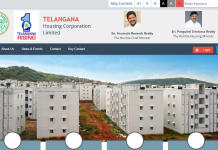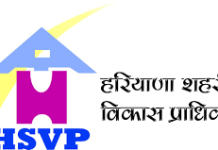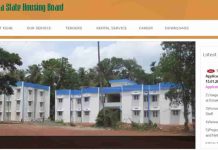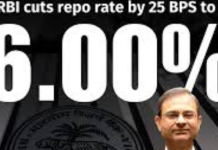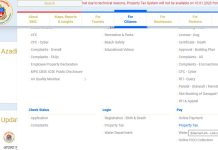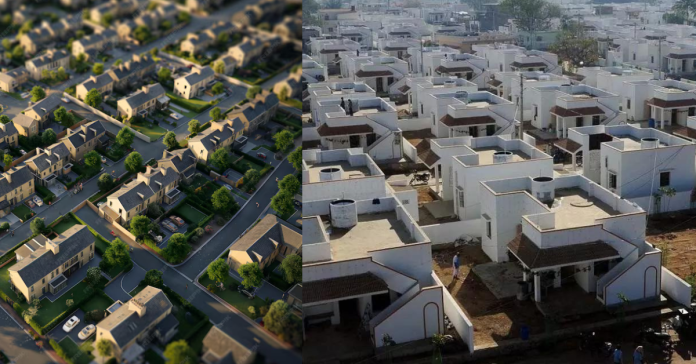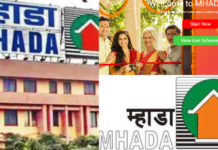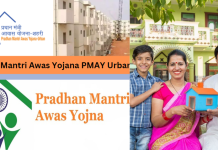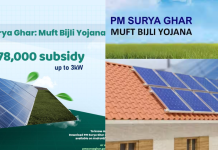Launched in 1985, the Indira Awas Yojana (IAY) played a significant role in addressing rural housing needs in India. It emerged as a comprehensive program for affordable housing solutions in rural areas, predating the government’s broader focus on mass housing initiatives.
Key Features of IAY:
- Targeted Assistance: IAY prioritized providing permanent housing for the most vulnerable populations, including Scheduled Castes (SCs), Scheduled Tribes (STs), and other economically disadvantaged groups.
- Focus on Affordability: The program aimed to make housing accessible for those facing financial hardship in rural communities.
Legacy of IAY:
While IAY is no longer a separate scheme, its core objective of supporting rural housing for underprivileged groups continues under the Pradhan Mantri Awas Yojana (PMAY) program, particularly the PMAY-Gramin (Rural) sub-scheme. PMAY builds upon the foundation laid by IAY, delivering targeted assistance in a more focused manner.
The Indira Awas Yojana (IAY) played a pioneering role in providing affordable housing solutions in rural India. Launched in 1985, it aimed to address the housing needs of the most economically disadvantaged sections of society.
Initially, IAY functioned as a sub-scheme under the Rural Landless Employment Guarantee Programme (RLEGP). It prioritized families classified as Below Poverty Line (BPL) and those facing economic hardship.
Evolution of IAY:
- 1989: IAY became a sub-scheme of the Jawahar Rozgar Yojana (JRY).
- Early 1990s: The program initially focused on reserved categories like Scheduled Castes (SCs), Scheduled Tribes (STs), and Other Backward Classes (OBCs).
- 1993-1994: IAY was expanded to include non-reserved categories, broadening its reach to more underprivileged families.
- 1996: The scheme extended benefits to spouses and wards of defense and paramilitary personnel killed in action, as well as ex-servicemen and retired personnel from the forces.
PMAY-Gramin Takes Over:
The Pradhan Mantri Awas Yojana – Gramin (PMAY-G) program, launched in 2016, subsumed IAY. While IAY is no longer a separate scheme, PMAY-G continues its core objective of providing permanent housing solutions for economically vulnerable families in rural areas.
Understanding IAY’s Objectives:
The IAY program focuses on three core objectives:
- Improved Housing: IAY prioritizes providing pucca houses to families living in kuchcha (makeshift) dwellings, significantly enhancing their living standards and offering protection from harsh weather conditions.
- Social Upliftment: By ensuring access to safe and secure housing, IAY empowers women by providing them with a sense of ownership and control over their living space.
- Poverty Alleviation: The financial assistance provided under IAY acts as a catalyst for poverty alleviation in rural areas. Owning a pucca house reduces living expenses and frees up resources for other household needs.
Application Process for IAY:
The application process for IAY typically involves these steps:
- Gram Panchayat: Interested families can approach their respective Gram Panchayat (village council) and express their interest in the scheme.
- Verification and Selection: The Gram Panchayat officials will verify the applicant’s eligibility based on established criteria and prepare a priority list.
- Sanctioning of Funds: Once shortlisted, the selected families will receive a sanction letter for the approved amount.
- Construction and Monitoring: The construction process is monitored by the Gram Panchayat to ensure adherence to quality standards.
Benefits of IAY:
The IAY program offers a range of benefits for eligible families:
- Financial Assistance: The government provides a specific amount (subject to change) to cover the cost of constructing a pucca house.
- Improved Living Conditions: Owning a pucca house provides better comfort, hygiene, and protection from the elements.
- Enhanced Social Status: A pucca house symbolizes ownership and contributes to a sense of security and well-being within the family.
- Empowerment of Women: Secure housing empowers women within the household and strengthens their decision-making power.
Challenges and Future Directions:
The IAY program has faced challenges like delays in fund disbursement, ensuring quality construction, and reaching the most marginalized communities. However, the government is constantly working to improve the program’s efficiency and effectiveness. Here are some potential future directions:
- Increased Allocation: Increased financial allocation from the government could benefit more families in need.
- Technological Advancements: Leveraging technology for online applications and monitoring construction could enhance transparency and efficiency.
- Focus on Sustainability: Integrating sustainable construction practices could promote environment-friendly housing solutions.
Eligibility Criteria for Indira Awas Yojana (Previously Known as IAY)
The Indira Awas Yojana (IAY), now part of the Pradhan Mantri Awas Yojana (PMAY), was designed to prioritize providing permanent housing solutions for those facing economic hardship in rural India.
Here’s a breakdown of the primary groups who were eligible for assistance under IAY:
- Below Poverty Line (BPL) Households: Families categorized as Below Poverty Line received top priority for IAY benefits.
- Socially and Economically Disadvantaged: Individuals and families facing social and economic disadvantages were also considered.
- Vulnerable Groups: Specific vulnerable groups, including:
- Scheduled Castes (SCs) and Scheduled Tribes (STs): These communities often face social and economic challenges, making them a priority.
- Ex-servicemen: Veterans who served in the Indian Armed Forces were eligible for IAY benefits.
- Freed Bonded Labourers: Individuals rescued from bonded labor were considered for assistance to help them rebuild their lives.
- Widows or Next of Kin of Armed Forces Personnel Killed in Action: These families were eligible for support due to the sacrifices made by their loved ones.
Documents Required for Applying to IAY (Indira Awas Yojana)
The Indira Awas Yojana application process typically requires these documents:
Proof of Identity:
- Ration Card: This serves as a primary document for identification purposes within the village community.
- Aadhaar Card (if available): The Aadhaar card, a unique identification number issued by the Indian government, can further strengthen your application.
Residence Proof:
- Residence Certificate Issued by Gram Panchayat: The Gram Panchayat can issue an official residence certificate verifying the applicant family’s residence within the village.
Proof of Below Poverty Line (BPL) Status:
- Income Certificate: An official document issued by competent authorities certifying the family’s income and BPL status is mandatory.
- Land Ownership Records (if applicable): If the family owns any land, documents like land patta (land ownership certificate) might be required.
Proof of No Pucca House Ownership:
- Self-Declaration: In some cases, a written declaration stating the family’s lack of a pucca house might be sufficient.
- Gram Panchayat Verification: The Gram Panchayat officials might physically verify the applicant’s existing dwelling to confirm the absence of a pucca house.
Additional Documents (may vary):
- Caste Certificate (if applicable): For families belonging to SC, ST, or Other Backward Classes (OBC), a caste certificate can be helpful.
- Disability Certificate (if applicable): If a family member has a disability, a disability certificate can be submitted for additional consideration.
Obtaining the Documents:
Most documents can be obtained from local government offices like the Panchayat office, tehsildar’s office, or the revenue department. Ration cards and Aadhaar cards might require separate application processes.
By having all the necessary documents prepared, you can streamline the application process for IAY and increase your chances of receiving assistance for constructing a pucca house.
AY (Indira Awas Yojana) Priority List
The Indira Awas Yojana prioritizes providing permanent housing to the most vulnerable families in rural India. Here’s a breakdown of the typical priority list followed during applicant selection:
Top Priority:
- Freed Bonded Labourers: Individuals and families who have been rescued from bonded labor are at the top of the priority list. They often lack proper housing and require immediate support for a secure living environment.
- SC/ST Households Facing Atrocities: Households belonging to Scheduled Castes (SC) or Scheduled Tribes (ST) who have faced violence or discrimination are prioritized due to their specific vulnerabilities.
- SC/ST Households Headed by Widows or Unmarried Women: Female-headed households within SC/ST communities often face social and economic challenges. IAY prioritizes providing them with secure housing for improved well-being.
- SC/ST Households Affected by Natural Disasters: Families belonging to SC/ST communities who have lost their homes due to natural disasters like floods, earthquakes, or cyclones receive high priority for rebuilding their lives with proper housing.
High Priority:
- Other SC/ST Households: Families from SC/ST communities below the poverty line are considered next in the priority list, aiming to bridge the housing gap within these marginalized groups.
General Priority:
- Non-SC/ST Households Below Poverty Line: While not the top priority, other BPL families in rural areas are also eligible for IAY benefits. However, a specific quota (usually around 40%) is allocated for them within the overall IAY budget.
Additional Considerations:
- Disability: Households with disabled members might receive additional weightage during selection due to their specific needs and challenges.
- Internal Displacement: Families displaced due to developmental projects or internal conflicts can also be considered, depending on the availability of funds.
Selection Process:
The Gram Panchayat (village council) plays a crucial role in verifying applicant eligibility and preparing the priority list. They consider the aforementioned criteria, along with any specific state or local government guidelines, to ensure the most deserving families benefit from the program.
It’s important to note that the priority list might vary slightly depending on your state and the specific allocation of funds
he Indira Awas Yojana (IAY) program doesn’t directly undertake specific projects itself. It functions as a financial assistance scheme that empowers rural families to construct their own pucca houses. However, the program prioritizes beneficiaries based on their needs and vulnerabilities. Here’s a breakdown of the target beneficiaries and the type of housing solutions IAY aims to support:
Target Beneficiaries:
- Freed Bonded Labourers: Individuals and families who have been rescued from bonded labor are a top priority. IAY empowers them to build secure and independent lives by providing financial assistance for constructing pucca houses.
- Households Below Poverty Line (BPL): The core beneficiaries of IAY are rural families living in poverty who lack proper housing. This includes families belonging to Scheduled Castes (SC), Scheduled Tribes (ST), and Other Backward Classes (OBC), as well as other underprivileged communities.
- Vulnerable Groups: IAY prioritizes families facing specific vulnerabilities, including:
- Female-headed households (widows or unmarried women): Providing secure housing empowers women within the family and strengthens their decision-making power.
- Households affected by natural disasters: Families who have lost their homes due to floods, earthquakes, or cyclones receive assistance to rebuild their lives.
- Households with disabled members: These families might require additional support for constructing a pucca house that caters to the specific needs of the disabled individual.
Type of Housing Solutions:
IAY doesn’t dictate specific house designs. However, the financial assistance provided is intended for constructing a pucca house that meets certain basic criteria:
- Durability: The house should be constructed with permanent materials like bricks, concrete, or stone to offer protection from harsh weather conditions and ensure long-term use.
- Basic Amenities: The house should ideally have a roof, walls, and a usable floor space to provide basic shelter and living comfort.
- Sanitation Facilities: While IAY doesn’t directly address sanitation, promoting the construction of toilets alongside pucca houses is often encouraged to improve overall hygiene and living standards.
Additional Considerations:
- Land Ownership: The beneficiary family should ideally have ownership or access to land for constructing the house.
- Sustainability: In some cases, IAY might promote the use of locally available and sustainable construction materials to reduce environmental impact.
Impact of IAY:
The IAY program has significantly contributed to:
- Reduced Housing Shortage: By providing financial assistance for pucca house construction, IAY has helped bridge the rural housing gap.
- Improved Living Conditions: Pucca houses offer better protection from the elements, improved hygiene, and a more secure living environment for families.
- Empowerment of Women: Secure housing ownership strengthens women’s decision-making power within the household.
- Poverty Alleviation: Owning a pucca house reduces living expenses and frees up resources for other household needs.
IAY Reports: Tracking Progress and Transparency:
Government Websites:
- Ministry of Rural Development: The official website of the Ministry of Rural Development (MoRD), the nodal ministry for IAY, is a good starting point (https://rural.gov.in/en). Look for sections dedicated to IAY reports or publications. These reports might provide national-level data on fund allocation, beneficiary selection, and project completion rates.
- State Government Websites: Many state governments have dedicated websites for their rural development departments. These websites might offer state-specific IAY reports detailing progress within the state, including beneficiary demographics and project timelines.
Online Reporting Platforms:
- EFMS (Electronic Fund Management System): The EFMS is a government platform that tracks financial transactions related to various schemes, including IAY. While not directly accessible to the public, it allows authorities to monitor fund disbursement and ensure proper utilization of resources.(https://rhreporting.nic.in/netiay/EFMSReport/FTOTransactionSummary.aspx)
Frequently Asked Questions:
The Indira Awas Yojana (IAY), launched in 1985, was a central government program that provided financial assistance to rural families for constructing pucca (permanent) houses. It aimed to bridge the housing gap for the most underprivileged sections of society in rural India.
Yes, IAy or Indira Awas Yojana is subsumed and it was incorporated into the Pradhan Mantri Awas Yojana (PMAY) in April 2017.
PMAY-Gramin has a broader scope compared to IAY. While IAY focused solely on rural housing, PMAY encompasses both rural and urban housing needs through various sub-schemes targeting different income segments.
IAY didn’t dictate specific house designs. However, the financial assistance provided was intended for constructing a pucca house that meets basic criteria:
Durability: Built with permanent materials like bricks, concrete, or stone for long-term use and protection from harsh weather.
Basic Amenities: Ideally with a roof, walls, and a usable floor space to provide basic shelter and living comfort.
Sanitation Promotion: While IAY didn’t directly address sanitation, it sometimes encouraged constructing toilets alongside pucca houses for improved hygiene.
Suggested Articles:
Pradhan Mantri Awas yojana (PMAY) : Eligibility and Apply Online 2024
PM Kisan Status of self-registered farmers, beneficiary list, and name correction 2024
PMGSY 2024: Pradhan Mantri Gram Sadak Yojana Scheme






